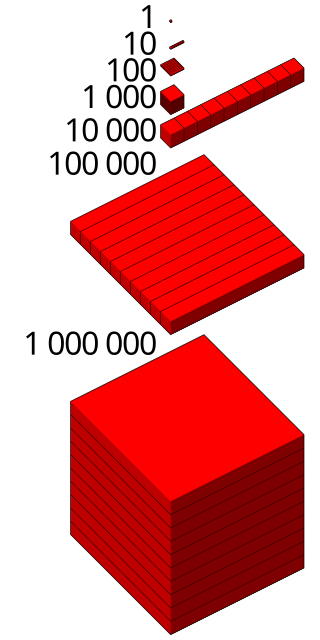Mathematics
16 is the ninth composite number, and a square number: 4 2 = 4 × 4 (the first non-unitary fourth-power prime of the form p4). It is the smallest number with exactly five divisors, its proper divisors being 1, 2, 4 and 8.
Sixteen is the only integer that equals mn and nm, for some unequal integers m and n (, , or vice versa). [1] It has this property because . It is also equal to 32 (see tetration).
The aliquot sum of 16 is 15, within an aliquot sequence of four composite members (16, 15, 9, 4, 3, 1, 0) that belong to the prime 3-aliquot tree.
- Sixteen is the largest known integer n, for which is prime.
- It is the first Erdős–Woods number. [2]
- There are 16 partially ordered sets with four unlabeled elements. [3]
16 is the only number that can be both the perimeter and area of the same square, due to being equal to
The sedenions form a 16-dimensional hypercomplex number system.
Hexadecimal
Sixteen is the base of the hexadecimal number system, which is used extensively in computer science.







